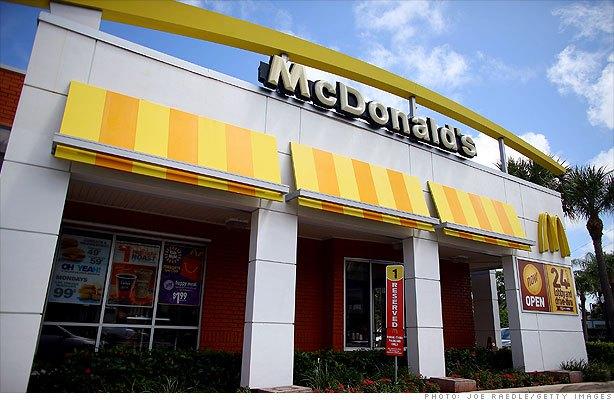
Caption
A Kennesaw, Ga., McDonald's location is seen. Researchers studying the prevalence of chain restaurant locations found some surprising trends.
|Updated: October 10, 2022 1:25 PM
LISTEN: GPB's Peter Biello speaks with Georgia Tech's Xiaofan Liang about her research into the prevalence of chain restaurants across the U.S.

A Kennesaw, Ga., McDonald's location is seen. Researchers studying the prevalence of chain restaurant locations found some surprising trends.
When you think of the city or town that you most like to visit, perhaps you also think of your favorite restaurant there. It could be a greasy spoon type diner. Or maybe it's a restaurant known for its chef's tasting menu. Whatever it is, that restaurant may help define that place for you.
Restaurants can make a place unique and help express local culture. But when an area has a high proportion of chain restaurants, whether it's fast food or upscale steakhouses, it risks losing that sense of place. Those cities can become what researchers sometimes call “McCities.”
Researchers at Georgia Tech have been mapping out where in the U.S. you can find the highest and lowest prevalence of chain restaurants. And they've made some interesting discoveries. Ph.D. candidate at the School of City and Regional Planning at Georgia Tech Xiaofan Liang and her advisor Clio Andris are behind the research. Liang spoke with GPB's Peter Biello.
Peter Biello: So what made you want to look into the number of chain restaurants across the U.S.?
Xiaofan Liang: In my personal experience, I moved between different states in United States, and as I moved, I noticed the foodscape was very different. In San Francisco, where I previously worked, there are very unique brands there. The independent restaurants are also more present. But when I moved to Atlanta, it's an entirely different view. So it got me interested to see how foods are actually different in different states.
Peter Biello: And you found that most "McCities" were in the southern U.S. and the Midwest. What is it about those places that helps chain restaurants thrive?
Xiaofan Liang: I think there are a lot of factors there. For example, Georgia has been home base for some famous chain brands such as Chick-fil-A, Waffle House, Mellow Mushroom, Moe's Southwest Grill and Applebee's. So these brands are actually born out of Georgia or Atlanta. It doesn't mean these brands only open in the South, but they do have higher concentrations here. So that is one factor. The other factor could be, for the South, the driving culture — also a higher percentage of commuters going to work through driving. If you have a lot of highways, they tend to be associated with chain restaurants.
Peter Biello: You found a correlation between the prevalence of chain restaurants and places that supported President Trump. What does this finding show you?
Xiaofan Liang: It shows me is that, to some extent, foodscape is political; that there are a lot of values that we put into when we choose where we go to dine and what kind of restaurants we can open. So that is not just an individual decision. It's also correlated with what kind of policy environments are supportive or what kind of business in different states as well. So if I'm not making too much of a further down argument on causality, I think there are a lot of factors underground between these two variables that may be mediating it, including culture, including the built environment, including policy environments, and all these that built up to this divide.
Peter Biello: You also found that "independent restaurants were associated with dense, pedestrian-friendly environments, highly educated and wealthy populations, racially diverse neighborhoods and tourist areas." If you could break that down for us a little bit, can you tell us why all those factors matter here?
Xiaofan Liang: Yes, I think from an individual experience perspective. So if you personally have gone to any of the touristy area or like historic downtown area, they tend to have a better walkable environment where independent restaurants also like to open there to show a certain kind of identity or support for local culture. So I think some of these aspects, cultural factors are also correlated with each other and in that sense that make a walkable space also likely to have independent restaurants and vice versa as well.
Peter Biello: Did you find any other surprises in this data?
Xiaofan Liang: So there are some variables that we expect to have correlation but did not have a strong of a correlation as we expected. For example, income. ... We were expecting that maybe area with higher income will have a significant correlation with independent restaurants because a lot of independent restaurants will be willing to serve or have more styles of serving for people who are able to afford it. But we didn't see that strong of a correlation. There's a slight correlation, but not as strong. So, like, even rich people, they could live in an environment where it's full of chain as well. And for some communities, which is low income — also more likely they're ethnically diverse communities — they could also afford a food scape that's very diverse, responding to their identity, and that doesn't have to tie to income. So I think that is something that it's slightly surprising that we didn't find as strong of a correlation between income and the presence of independent restaurants.